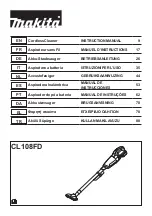
2/
Safety
8/38
1786-001 en/2022-08
2.5 Hazards due to high temperature
The ultrasound bath, the sonication fluid and the sonication objects
can become hot during operation. Contact with these products may
cause burns. The temperature can be set at up to 80 °C.
Ultrasound energy warms up the sonication fluid even without
additional heating. Prolonged ultrasound operation can lead to very
high temperatures. In an ultrasound bath with heating, the set
temperature can be significantly exceeded by the energy of the
ultrasound.
• Observe the treatment times recommended by the manufac-
turer of the ultrasound preparation. Do not leave the ultrasound
switched on for longer than necessary.
• Do not reach into the sonication fluid with your hand. Remove
sonication objects with the insert basket or forceps.
• Allow the sonication objects to cool before touching them.
• Lifting from the handles can cause the hands to touch the edge
of the oscillating tank, which can be very hot. After operation,
allow the ultrasound bath to cool down before lifting it for emp-
tying.
Non-aqueous fluids can heat up many times faster than water. A
possible flashpoint can be reached or exceeded after a very short
sonication time. In the case of high-boiling liquids, the bath tem-
perature can rise to over 120 °C due to the energy input of the
ultrasound. This can lead to fires and severe burns.
• Do not use combustible, explosive, non-aqueous liquids (e.g.
petrol, solvents) or mixtures with combustible liquids (e.g. alco-
holic solutions) directly in the stainless steel oscillating tank.
• Small quantities of flammable liquids in sample containers can
be sonicated indirectly. Before sonication of flammable liquids,
familiarise yourself with the necessary safety measures and
applicable regulations for handling these liquids.
Содержание 184XIB.00158520.001
Страница 36: ...8 Device information 36 38 1786 001 en 2022 08 ...
Страница 37: ...1786 001 en 2022 08 37 38 ...









































